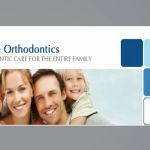Introduction to Tooth Enamel Erosion
The importance of dental health cannot be overstated, as it is crucial not only for aesthetic reasons but also for overall well-being. Tooth enamel, the hardest substance in the human body, plays a pivotal role in protecting teeth from decay and damage. However, enamel erosion is a significant issue that many individuals face, particularly in the United States. Enamel erosion refers to the loss or wear of the outer layer of your teeth, which can lead to sensitivity, discoloration, and increased risk of cavities.
Understanding the primary causes of tooth enamel erosion can empower individuals to take proactive steps in maintaining their dental health. With proper knowledge and care, the negative impact of enamel damage can be mitigated. This article by Dentistry Toothtruth delves into the main causes of enamel erosion, providing valuable insights for maintaining strong and healthy teeth.
Acidic Foods and Beverages
Acidic foods and beverages are among the leading contributors to tooth enamel erosion. Frequent consumption of items like citrus fruits, tomatoes, and carbonated drinks can weaken enamel due to their high acid content. These acids can gradually wear away the enamel, exposing the underlying dentin and leading to increased sensitivity and other dental issues.
In the United States, sugary drinks like sodas and energy drinks are particularly prevalent, and they contain both sugar and acid, exacerbating the erosion process. Studies have shown that individuals who frequently consume these beverages have a higher risk of enamel erosion. To protect your teeth, consider moderating your intake of acidic foods and drinks, or consuming them alongside meals to help neutralize their effects.
Brushing Habits and Techniques
While good oral hygiene is essential, overly aggressive brushing techniques can contribute to enamel erosion. Using a hard-bristled toothbrush or applying excessive pressure can wear down the enamel over time. It's essential to adopt a gentle brushing technique using a soft-bristled toothbrush to maintain enamel integrity.
Studies indicate that Americans often replace their toothbrushes less frequently than recommended, leading to the use of worn-out bristles that can further damage enamel. To protect your teeth, replace your toothbrush every 3 to 4 months and consider using toothpaste formulated for enamel protection.
Medical Conditions and Medications
Certain medical conditions and medications can significantly impact tooth enamel health. Gastroesophageal reflux disease (GERD) is a common condition in the US that leads to stomach acids rising into the mouth, directly affecting enamel integrity. Similarly, conditions like bulimia and chronic dry mouth can contribute to erosion.
Additionally, some medications, such as antihistamines, aspirin, and chemotherapy drugs, can have side effects that reduce saliva flow or increase acid levels, both of which can exacerbate enamel erosion. It's crucial to discuss any potential dental side effects with your healthcare provider and seek appropriate dental care.
Environmental and Lifestyle Factors
Environmental factors, such as exposure to chlorine in swimming pools, can also play a role in enamel erosion. Swimmers who spend significant time in pools with improperly balanced pH levels may be at risk. Furthermore, lifestyle choices such as smoking and alcohol consumption can also affect enamel health by promoting dry mouth and acidity.
In the US, where swimming is a popular form of exercise, ensuring that pool water is correctly maintained can prevent potential damage to tooth enamel. Likewise, adopting healthier lifestyle habits can significantly contribute to the preservation of enamel.
Genetic Predisposition
Genetic factors can influence the strength and resilience of tooth enamel. Some individuals may be genetically predisposed to weaker enamel, making them more susceptible to erosion. While genetic predisposition cannot be altered, being aware of this factor can prompt individuals to take extra precautions in protecting their enamel.
Those with a family history of dental issues should be especially vigilant in their dental care practices, regularly visiting their dentist for personalized advice and treatment plans tailored to their specific needs.
Preventive Measures and Recommendations
Prevention is the best approach when it comes to enamel erosion. Implementing the following strategies can help maintain strong enamel and overall dental health:
- Limit intake of acidic and sugary foods and beverages.
- Maintain good oral hygiene with proper brushing techniques.
- Stay hydrated to promote saliva production.
- Use fluoride-based toothpaste to strengthen enamel.
- Visit your dentist regularly for check-ups and cleanings.
By incorporating these preventive measures, individuals can significantly reduce the risk of enamel erosion and ensure healthier, stronger teeth.
Conclusion
Understanding the causes of tooth enamel erosion is the first crucial step in preventing its detrimental effects. From dietary choices and brushing habits to medical conditions and genetic factors, there are multiple elements to consider when it comes to protecting your enamel. By staying informed and implementing preventive strategies, you can maintain robust dental health.
The key is to remain proactive and vigilant in your dental care routine. As highlighted throughout this article by Dentistry Toothtruth, the preservation of tooth enamel is fundamental to sustaining overall oral health. We recommend scheduling regular dental visits and seeking professional advice tailored to your individual needs to ensure the best outcomes for your dental health.







 Dr. Jeffrey C. Liu and Dr. Shaun Dadjoo - Porter Ranch Orthodontists5.0 (57 review)
Dr. Jeffrey C. Liu and Dr. Shaun Dadjoo - Porter Ranch Orthodontists5.0 (57 review) Tend East Nashville4.0 (319 review)
Tend East Nashville4.0 (319 review) Dental Bright advanced family dentistry & orthodontics4.0 (69 review)
Dental Bright advanced family dentistry & orthodontics4.0 (69 review) George Orthodontics4.0 (55 review)
George Orthodontics4.0 (55 review) Mattschei Marcelo W DDS1.0 (1 review)
Mattschei Marcelo W DDS1.0 (1 review) Dr. Matt Orthodontics (Formerly known as Walker Orthodontics)5.0 (164 review)
Dr. Matt Orthodontics (Formerly known as Walker Orthodontics)5.0 (164 review) The Importance of Oral Health Education During Pregnancy for a Healthy Pregnancy
The Importance of Oral Health Education During Pregnancy for a Healthy Pregnancy Best Tips for Brushing Your Teeth Properly for Healthy Gums: Essential Techniques for Oral Health
Best Tips for Brushing Your Teeth Properly for Healthy Gums: Essential Techniques for Oral Health Why Skipping Dental Checkups Can Lead to Bigger Oral Health Problems
Why Skipping Dental Checkups Can Lead to Bigger Oral Health Problems Advantages of Porcelain Dental Restorations
Advantages of Porcelain Dental Restorations How Can Diabetes Cause Tooth and Gum Problems? Preventing and Managing Oral Health Issues
How Can Diabetes Cause Tooth and Gum Problems? Preventing and Managing Oral Health Issues Healthy Habits for Promoting Good Oral Health and Hygiene: Tips for a Healthy Smile
Healthy Habits for Promoting Good Oral Health and Hygiene: Tips for a Healthy Smile